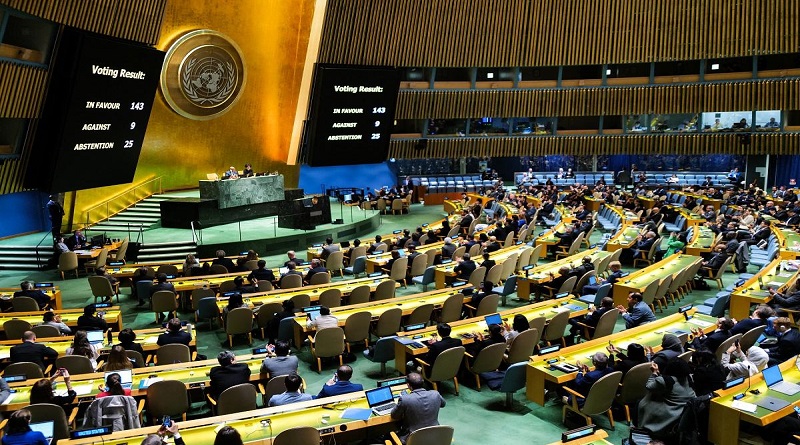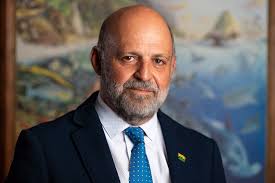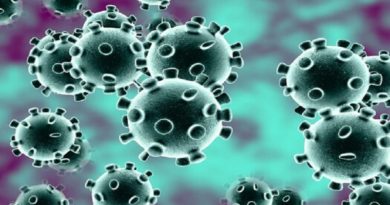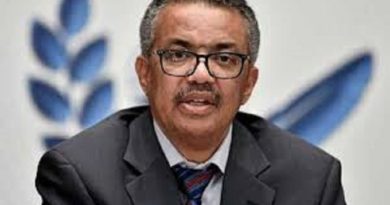Unprecedented AI-powered art brings digital environmentalism to the United Nations
At the United Nations headquarters, where world leaders will gather to address critical global challenges during the General Assembly (UNGA) high-level week, they will have a unique opportunity to experience a groundbreaking artwork that leverages artificial intelligence to transform environmental conservation.
Developed by the renowned Refik Anadol Studio, Large Nature Model: Coral, an unprecedented AI-generated portrayal of coral reefs, takes center stage as governments, civil society and other stakeholders meet for the Summit of the Future during UNGA on an array of pressing issues – from the Sustainable Development Goals and climate action to new and emerging technologies.
Utilizing a machine learning algorithm trained on a staggering 100 million coral reef images, this monumental immersive installation offers an unprecedented glimpse into the vastness and complexity of our oceans. It serves as a poignant reminder of what’s at stake in the fight for our planet’s future.
“Refik Anadol’s artwork is a testament to the beauty and fragility of our natural world,” said UN Under-Secretary-General Melissa Fleming. “It’s a clarion call to world leaders: we must harness the power of technology, and human ingenuity and agency to incite action to protect our planet before it’s too late.”
Large Nature Model: Coral exemplifies the potential of AI not only to illuminate the consequences of environmental degradation but also to inspire innovative solutions. Anadol’s work, a tribute to the power of merging art with science, technology and innovation, serves as a powerful message and call to action—inspiring greater understanding, deeper reflection and a much-needed sense of responsibility to safeguard our natural world.
“It’s an honor to participate in this year’s Summit of the Future and be part of the critical dialogues shaping our global future. As an interdisciplinary artist, I hope that Large Nature Model: Coral inspires people to see how technology can foster deeper connections with our planet and empower us to work together toward a more sustainable world,” stated Refik Anadol, Media Artist and co-founder of Refik Anadol Studio.
“I’m also grateful for Patrick J. McGovern Foundation’s support of the RAS AI Foundation’s Large Nature Model research. Established in 2023, RAS AI Foundation is dedicated to the ethical integration of art, science, and technology, ensuring responsible innovation that drives forward both creative and scientific exploration,” Anadol added.
Our coral reef ecosystems, often called the “rainforests of the ocean,” are dying at an alarming rate. They are among the most vulnerable ecosystems on the planet to climate change. These undersea cities, which support 25 per cent of marine life, could virtually disappear by the end of this century.
“AI is not just a tool for innovation—it’s a force that can reshape how we see our planet, reconnecting us with the beauty and fragility of nature in ways never before possible. Refik Anadol’s brilliant vision allows us to use technology to engage the senses and spark a deeper emotional connection to our natural world,” said Vilas Dhar, President at the Patrick J. McGovern Foundation.
“Large Nature Model: Coral, merges technology with artistic expression to open new pathways for engagement, helping humanity see not just the challenges but the opportunities to build a sustainable future. As we look toward the Summit of the Future, we must seize this moment to harness AI’s power to shift perspectives and drive collective change for generations to come,” Dhar added.
Large Nature Model: Coral will be on display at the UN headquarters from 21 to 28 September, coinciding with the annual gathering of world leaders and the Summit of the Future. This year’s Summit, which takes place from 21 to 22 September, focuses on strengthening multilateralism and addressing critical challenges and opportunities, including those presented by new and emerging technologies such as AI.
The exhibition is organized in collaboration with the Executive Office of the UN Secretary- General, in partnership with the Patrick J. McGovern Foundation.




